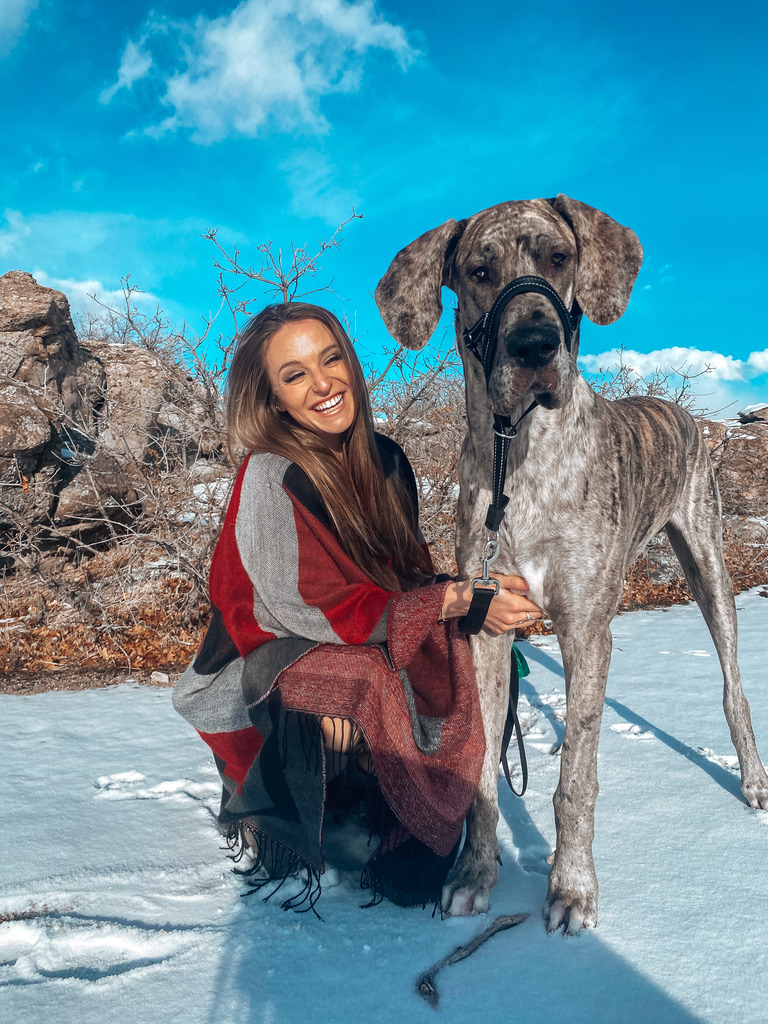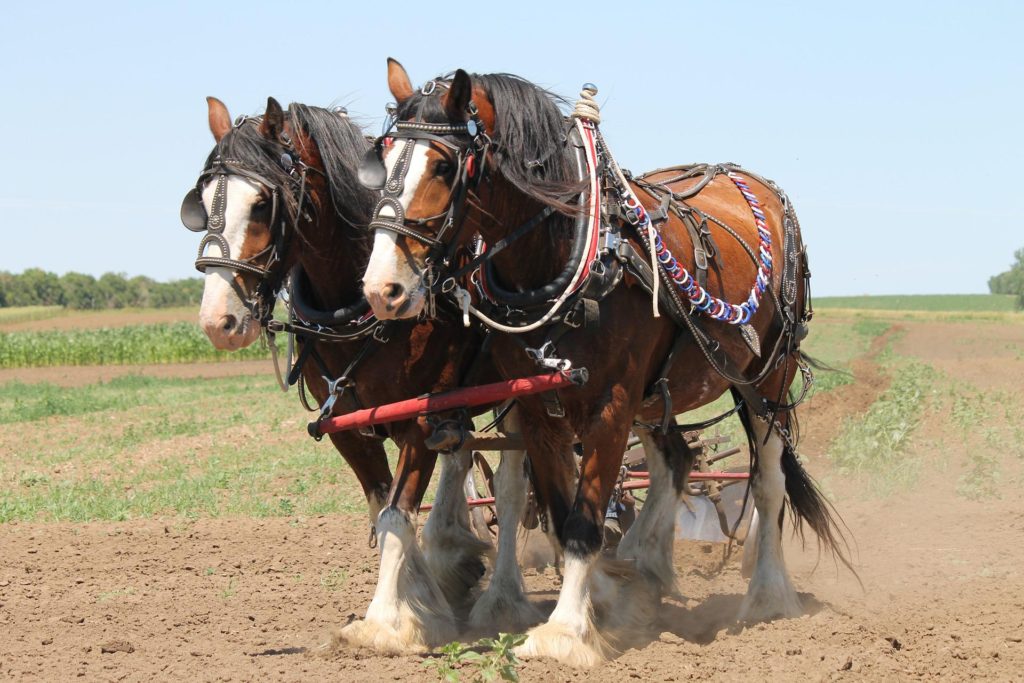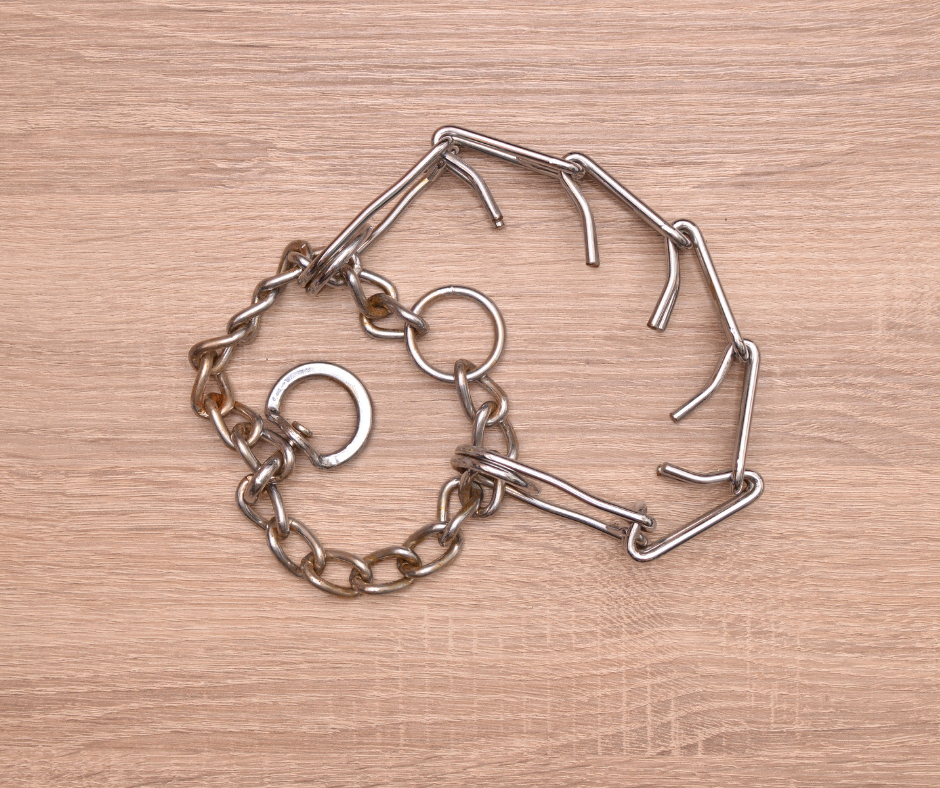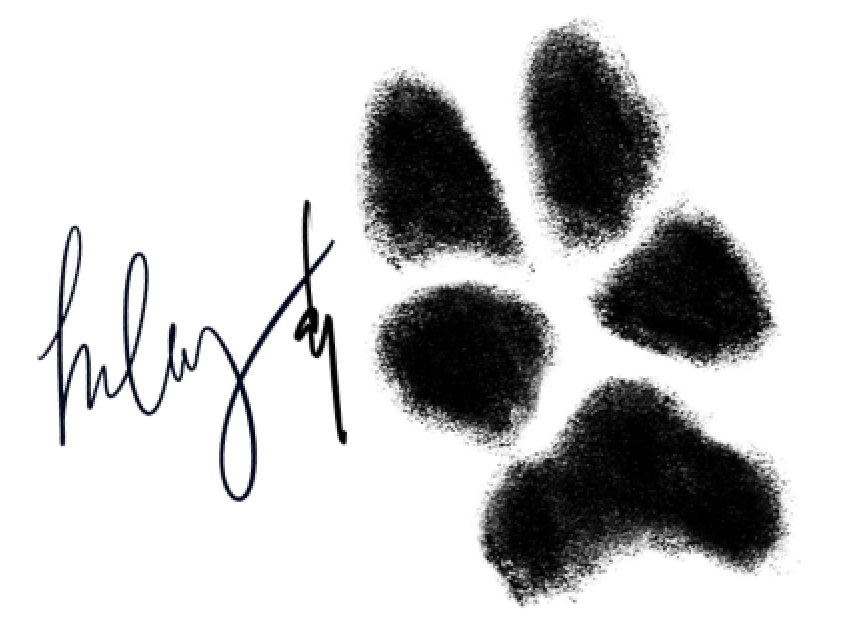The best tool for teaching your Dane leash manners at an early age.

This post contains affiliate links which means I may receive a small commission if you purchase through them (at no extra cost to you). Shopping through these links helps me keep the blog running – I appreciate your support!
Because Dior is larger than your average dog, “wHo’S wAlKinG wHo?” is a question I get asked hundreds of times when we are out-and-about… While it might seem funny for people to ask this obviously heinous question, it can actually be really f’ing scary to picture your 150lb+ dog dragging you down the sidewalk.
Dior is the third Dane I have raised from a baby and it was always very important to me that all of my dogs learn leash manners from an early age.
Not being able to control your leashed dog can be not only embarrassing, but also dangerous for you and your pup.
Now I have tried all of the things:
🐾 metal prong collars
🐾 martingale collars
🐾 harnesses
🐾 shock collars
🐾 chain slip collars
🐾 and the gentle leader
Don’t get me wrong – all of these different options serve their purpose one way or another, but for walking purposes only, the gentle leader is the way to go.
With that being said – not all gentle leaders are created equal. From Halti brand to slipknot leads, none of them compare to this padded, fully adjustable head collar that is reinforced with reflective stitching…. Oh and did I mention it is less than $20!?
Before we get into the nitty gritty, let me tell you WHY I prefer the gentle leader to any form of harness out there.
When my mom got me my first Great Dane, Opal, in 2016, she INSISTED that I train her using a harness because it was the best thing since sliced bread when it came to walking our 30-pound Cocker Spaniel that had just passed months before.
However, when I tried to use the harness with Opal – I was faced with near disaster every time we stepped foot outside. Now I can already feel your eyes rolling to the back of your head before even making this comment – but let’s compare Great Danes to horses for a second.
Even if you don’t know a single thing about horses, you have probably gathered enough information over the years to know that IF you were to lead a horse from one place to another, the last thing you would do is put some sort of contraption around their chest, right!? The easiest, safest way would be to use a halter and lead rope.

Now, before you come for me – they actually DO make harnesses for horses.
Draft horses (the ‘Great Danes’ of the equestrian world), are usually the ones you see pulling the heaviest loads. By putting a harness on a horse, it allows them to pull up to 1/10th of their body weight in dead weight and 1.5 times their weight on a wheeled cart.
“by putting a harness on a horse, it allows them to pull up to 1/10th of their body weight in dead weight and 1.5 times their weight on a wheeled cart.”
PetKeen

“For example, a 2,000-pound horse can pull a 200-pound fallen log out of the way,” says PetKeen, and that same horse can pull up to 3,000-pounds if it’s in a wheeled cart. Put two working horses together and they can pull three times the amount of a singular horse. Read the full article here.
Now, I am not going to do the math for you and your 150-pound Dane… but I think you get the point.
Certain harnesses place the weight of whatever is behind it onto the horses (or dogs) shoulders so that the weight is delegated to the strongest parts of their body. *HINT: YOU DON’T WANT THAT ‘WEIGHT‘ TO BE YOU!*
Well, prong collars ‘ought to stop the pulling… right?
If you, too, have tried and failed with a traditional harness, you might resort to something a bit more heavy duty like a prong collar. While these collars can be an excellent way to teach your dog leash manners in the beginning, they can also pose a huge risk as well.

If used incorrectly – prong collars can cause more harm than good and should be used with extreme caution. For more information on prong collars and how to use them, I found a great article written by Roxanne Turner at Michigan State University that goes in depth regarding the dangers of improper use of prong collars and a two-part video series on how to use them. You can find the full article here.
What about my other options?
Although I only covered two of the options listed in depth (don’t worry – there will be future posts about those, too!), there is a right and a wrong way to go about using every single one of them.
According to the Humane Society, chain slip collars can cause injuries to the trachea, esophagus, blood vessels in the eyes, neck sprains, and even death. “Shock collars are often misused and can create fear, anxiety and aggression in your dog towards you or other animals.” Martingale collars are typically used for fearful dogs with narrow heads such as Greyhounds and Whippets who tend to retreat while on walks.
That brings us to the head collar…
Why the gentle leader makes sense:
“The head collar is similar in principle to a horse’s halter,” says the Humane Society, “The head collar is good for strong, energetic dogs who may jump and/or pull. Because the halter is around your dog’s muzzle, instead of their neck (or chest like you’d see with a harness), your dog loses a great deal of leverage and they are unable to pull on the leash with the full weight of their body.”
While the gentle leader is not intended to be used in a jerking or yanking fashion, it does give you the ability to gently steer your dog in the direction you need them to go.
I mentioned before that I have used several brands of head collar but have only found one I truly love and trust.
Insert the: “GoodBoy Dog Head Halter”
The traditional head collar reimagined.
Here are just a few reasons why I LOVE it so much:
🦮 fully padded muzzle piece to protect from chafing
🦮 reinforced with reflective stitching for nighttime visibility
🦮 adjustable in FOUR different places to fit your dog perfectly
🦮 multiple different colors to match your dog’s personality
🦮 long chin strap to allow for full motion of the mouth

This post is not sponsored in any way – I just love it so much that it would be wrong of me not to share.
I purchased mine off of Amazon, but after doing a bit of research for you – I found that it is cheaper to order it off of their website directly (however, both are under $20 right now)!
You can find the direct link to their website HERE!
The link to my Amazon storefront can be found HERE!
A few tips & tricks for you to follow after purchasing:
If you plan on purchasing a head halter of any kind, here are some things you should know…
- Be patient!
Just like with anything new you put on your dog, they are going to need some time to adjust to the feeling of it on their body! - Use high-value treats!
Initially, your Dane will likely be pawing at their face to get the gentle leader off, but if you reward them with enough treats and praise when they are not messing with it, they are sure to get the hang of it! - Start early!
You can always teach a dog new tricks, but I would recommend starting training at around 4-5 months of age! - When in doubt… size up!
I got Dior his first gentle leader when he was 4 months old. I wasn’t sure how big he was going to get so I ordered a size 4 (the biggest size they offer). It is adjustable in four different places which makes it easy to adjust while they grow into it!
As always – I would love to hear from you whether it be questions you may have, experiences you’ve lived through, or if you found this article helpful! Please leave us a comment below & help us grow our community by sharing this post on Pinterest!
See you next time!
